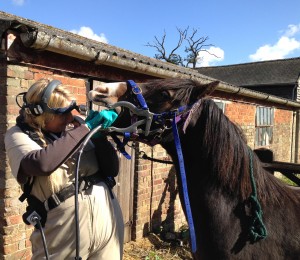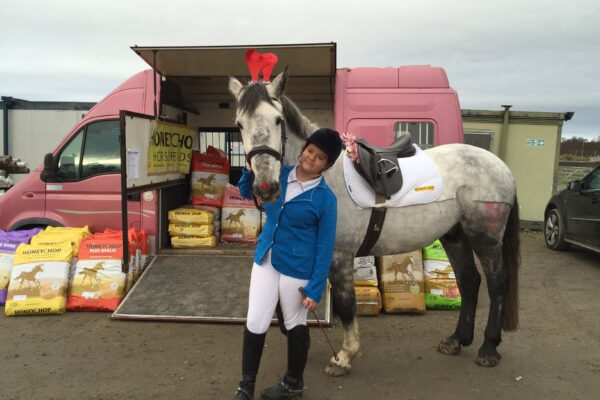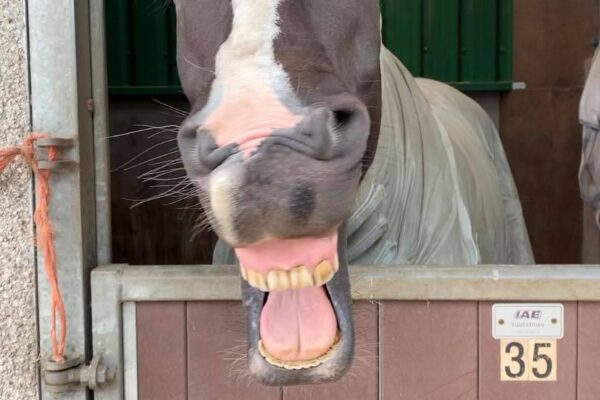Golden Rules of Equine Nutrition
When thinking about the correct nutrition and management for your horse, there are a few golden rules of equine nutrition to help. Feeding your horse can sometimes be extremely confusing – ask 4 people at the yard how to feed your horse and you will probably get 4 very different answers! More and more research is being carried out into equine nutrition and there are more and more products in your local store for feeding.
FEED LITTLE AND OFTEN
Feed little and often. Horses are non-ruminant herbivores that are designed to trickle feed. In their natural environment they can graze on average 16-18 hour per day. Their stomachs are small (a horses stomach is the size of a rugby ball), so hard feeds should not be larger than 2kg (less for ponies). Chaff can be added to the concentrate to encourage chewing; the more the horse chews, the more saliva is produced. Saliva has a buffering effect so helps reduce the risk of EGUS.
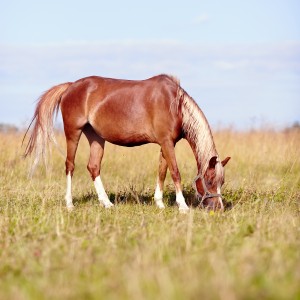
FEED ACCORDING TO SIZE
Feed according to size, workload, temperature, and living conditions. Most horses should consume between 1.5% to 2.5% of their bodyweight per day. Overweight, or maintenance diets should be approx. 1.5% of BW, pregnant mares up to 8 months should be approx. 2% BW, while growing young stock and lactating mares can consume up to 2.5% BW, as a general the total can be divided between forage and concentrates. A horse in light work can have the diet 0-30% hard feed and 70-100% fibre when compared to a lactating mare on a ration of 40-60 hard feed and 40-60% fibre. Every horse is unique so this is only a general guide.
CONDITION SCORING WEIGH TAPING
Regularly condition score, or use a weigh tape. By regularly weigh taping, or condition scoring you will be able to detect quickly if your horse needs to gain, lose or maintain weight. This information is critical when working out a dietary plan for your horse.

FEED BY WEIGHT, NOT VOLUME
As a guide, a Stubbs round scoop holds 1.5kg of horse cubes, 1kg of mix and 250grams of chaff like Honeychop Original. A double handful of Honeychop Original is approx. 250grams.
FEED AT THE SAME TIME EVERY DAY
Horses are creatures of habit and thrive on routine. An upset in routine can cause the horse stress.
FEED GOOD QUALITY AND ADEQUATE FIBRE
Horses are designed to eat fibre. It is essential for stimulating healthy gut function, but also has psychological benefits for the horse. It must not be old, dusty, or mouldy.
INTRODUCE CHANGES TO THE DIET GRADUALLY
Horses are hind gut fermenters so the gut flora must be allowed time to adjust to new diets.This will help prevent any digestive upset.

DO NOT WORK DIRECTLY AFTER FEEDING
This ‘rule’ has been updated in recent years, with better understanding of Equine Gastric Ulcer Syndrome. While it is advisable to not feed concentrates before exercise, vets are now recommending access to forage right up to the onset of fast work. The fibre helps prevent squamous ulcers in the stomach.
ENSURE CLEAN, FRESH WATER IS AVAILABLE AT ALL TIMES
The bucket, or water trough needs to be clean. During winter make sure it is not frozen and in the summer months the horse can easily double its water intake.
MAKE SURE YOU HAVE A GOOD FARRIER
A horses hooves are like human nails. They grow about a quarter of an inch a month, so they need to be trimmed and filed into shape regularly, and let’s not forget the importance of horseshoes. Farriers apply horseshoes to horses for a variety of reason, but they also apply hooves as a corrective measure to improve a horse’s gait and to help an animal gain traction when walking in slippery conditions such as ice.
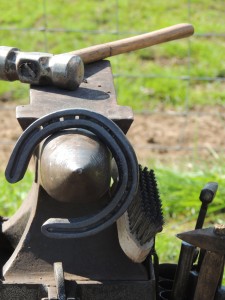
DON’T FORGET ABOUT THE DENTIST
Horses develop dental problems now that they live and work largely out of their natural habitat, so regular maintenance of a horses mouth is essential to its welfare. It is also essential for its digestion, performance and behaviour.
